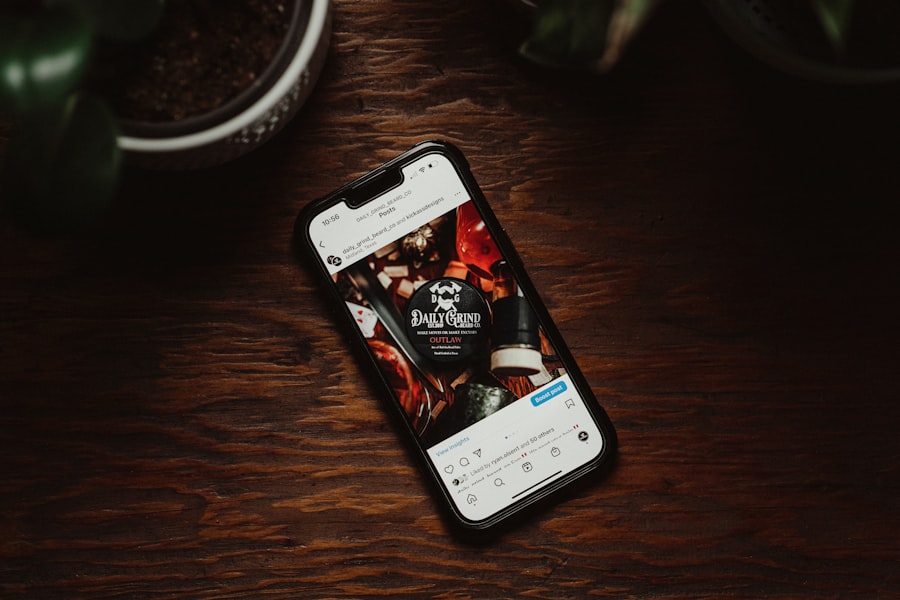In today’s digital age, the smartphone has become an indispensable part of your daily life. It serves as a communication tool, a source of entertainment, and a gateway to information. However, this convenience can quickly spiral into an unhealthy dependency, often referred to as phone addiction.
Understanding this phenomenon is crucial for recognizing its impact on your life. Phone addiction is characterized by excessive use of your device, leading to neglect of responsibilities, relationships, and even personal well-being. It’s not just about the time spent on your phone; it’s about how that time affects your mental and emotional health.
You may find yourself reaching for your phone during every spare moment, whether you’re waiting in line, sitting on the couch, or even during meals. This compulsive behavior can lead to a cycle of distraction and anxiety, where the need to check notifications or scroll through social media becomes overwhelming. Recognizing that phone addiction is a real issue is the first step toward regaining control over your life.
By understanding the underlying factors that contribute to this addiction, such as social pressure and the fear of missing out (FOMO), you can begin to address the root causes and work toward a healthier relationship with your device.
Key Takeaways
- Phone addiction is a real issue that can impact productivity and mental well-being
- Signs of phone addiction include constantly checking your phone, feeling anxious when separated from it, and neglecting responsibilities
- Phone addiction can lead to decreased productivity, as it can be a major distraction and time-waster
- Breaking free from phone addiction can be achieved by setting boundaries, finding alternative activities, and utilizing productivity apps
- Maintaining a balanced relationship with your phone is important for overall well-being and productivity
Signs and Symptoms of Phone Addiction
Identifying the signs and symptoms of phone addiction can be challenging, especially since many of these behaviors are normalized in today’s society. One of the most common indicators is the amount of time you spend on your phone each day. If you find yourself frequently checking your device or losing track of time while scrolling through apps, it may be time to reflect on your usage patterns.
You might also notice that you feel anxious or irritable when you are unable to access your phone, which is a clear sign that your attachment has crossed into unhealthy territory. Another symptom to consider is how your phone usage affects your daily life. Are you neglecting responsibilities at work or home because you’re too engrossed in your device?
Do you find it difficult to engage in face-to-face conversations because you’re preoccupied with notifications?
By acknowledging these signs, you can take proactive steps to address your phone habits and reclaim your time and focus.
The Impact of Phone Addiction on Productivity

Phone addiction can have a profound impact on your productivity levels, often leading to decreased efficiency and focus. When you’re constantly distracted by notifications or the urge to check social media, it becomes increasingly difficult to concentrate on tasks at hand. This fragmented attention can result in longer completion times for projects and a decline in the quality of your work.
You may find yourself spending more time than necessary on tasks that should be straightforward, simply because you can’t resist the pull of your device. Moreover, the mental fatigue that comes from constant phone use can leave you feeling drained and unmotivated. When you’re not fully present in your work or personal life, it becomes challenging to achieve your goals or maintain a sense of fulfillment.
The cycle of distraction can lead to procrastination, which only exacerbates feelings of stress and anxiety. By recognizing how phone addiction affects your productivity, you can take steps to mitigate its impact and create a more focused and efficient work environment.
Tips for Breaking Free from Phone Addiction
| Tip | Description |
|---|---|
| Set boundaries | Establish specific times when you will not use your phone, such as during meals or before bed. |
| Find alternative activities | Discover hobbies or activities that you enjoy and that don’t involve your phone. |
| Use app blockers | Install apps that can limit your usage of certain apps or websites. |
| Turn off notifications | Disable unnecessary notifications to reduce the urge to constantly check your phone. |
| Practice mindfulness | Engage in mindfulness exercises to become more aware of your phone usage habits. |
Breaking free from phone addiction requires intentional effort and commitment. One effective strategy is to set specific limits on your phone usage. You might start by tracking how much time you spend on various apps each day and then gradually reducing that time.
Setting daily or weekly goals can help you stay accountable and motivated as you work toward healthier habits. Additionally, consider designating certain times of day as phone-free periods, such as during meals or before bedtime, to help create boundaries around your usage. Another helpful tip is to identify triggers that lead you to reach for your phone.
Are there specific situations or emotions that prompt you to use your device? By recognizing these patterns, you can develop alternative coping strategies that don’t involve turning to your phone. For instance, if boredom drives you to scroll through social media, consider finding a new hobby or engaging in physical activity instead.
By replacing phone use with more fulfilling activities, you can gradually reduce your dependency on your device.
Setting Boundaries with Your Phone
Establishing clear boundaries with your phone is essential for regaining control over your usage. Start by creating designated areas in your home where phone use is discouraged, such as the dining room or bedroom. This physical separation can help reinforce the idea that there are times and places where being present in the moment takes precedence over screen time.
You might also consider turning off non-essential notifications or using “Do Not Disturb” mode during specific hours to minimize distractions. In addition to physical boundaries, it’s important to communicate your intentions with those around you. Let friends and family know that you’re working on reducing your phone usage so they can support you in this endeavor.
By fostering an environment where everyone respects these boundaries, you’ll find it easier to stick to your goals and create a more mindful relationship with technology.
Finding Alternative Activities to Replace Phone Use

One of the most effective ways to combat phone addiction is by finding alternative activities that engage your mind and body without relying on screens. Consider exploring hobbies that pique your interest, such as reading, painting, gardening, or cooking. These activities not only provide a welcome distraction from your device but also offer opportunities for personal growth and creativity.
Engaging in hands-on activities can be incredibly fulfilling and help you rediscover passions that may have been overshadowed by excessive phone use. Physical activity is another excellent alternative to screen time. Whether it’s going for a walk, joining a fitness class, or practicing yoga, moving your body can significantly improve your mood and overall well-being.
Exercise releases endorphins that boost happiness and reduce stress, making it an ideal way to counteract the negative effects of phone addiction. By incorporating these alternative activities into your daily routine, you’ll find it easier to break free from the grip of your smartphone.
Utilizing Productivity Apps to Limit Phone Use
While it may seem counterintuitive, utilizing productivity apps can actually help you limit phone use and regain control over your time. Many apps are designed specifically for this purpose, allowing you to track screen time, set usage limits for specific applications, and even block distracting sites during designated work periods. By leveraging technology in a mindful way, you can create a more structured approach to managing your phone habits.
Consider using apps that promote focus and productivity by providing features like timers for work sessions or reminders for breaks. Techniques such as the Pomodoro Technique—where you work for 25 minutes followed by a 5-minute break—can be easily integrated into these apps. By setting clear boundaries around when and how long you use your phone, you’ll cultivate a more productive environment while still enjoying the benefits of technology.
Practicing Mindfulness and Self-Awareness
Practicing mindfulness and self-awareness is crucial for breaking free from phone addiction. Mindfulness involves being fully present in the moment and acknowledging your thoughts and feelings without judgment. By incorporating mindfulness techniques into your daily routine, such as meditation or deep breathing exercises, you can develop a greater awareness of when and why you reach for your phone.
This heightened self-awareness allows you to make more intentional choices about how you engage with technology. You might also consider keeping a journal to reflect on your phone usage patterns and emotions associated with them. Writing down your thoughts can help clarify why certain situations trigger the urge to use your device and provide insights into how you can respond differently in the future.
By cultivating mindfulness around your phone habits, you’ll be better equipped to resist impulsive behaviors and make choices that align with your values and goals.
Seeking Support and Accountability
Breaking free from phone addiction can be challenging, but seeking support from friends, family, or even online communities can make a significant difference in your journey. Sharing your goals with others creates a sense of accountability that can motivate you to stay committed to reducing screen time. You might find it helpful to join a support group focused on digital wellness or engage with online forums where individuals share their experiences and strategies for overcoming similar challenges.
Additionally, consider partnering with a friend who shares similar goals regarding phone usage. You can check in with each other regularly to discuss progress, share tips, and celebrate successes along the way. Having someone who understands what you’re going through can provide encouragement during difficult moments and reinforce the importance of maintaining healthy boundaries with technology.
Creating a Phone-Free Workspace
Creating a phone-free workspace is an effective strategy for enhancing focus and productivity while minimizing distractions from technology. Start by designating a specific area in your home or office where phones are not allowed during work hours. This physical separation helps reinforce the idea that this space is dedicated solely to productivity and creativity.
By cultivating a workspace free from distractions, you’ll find it easier to concentrate on tasks at hand and achieve greater levels of productivity.
Maintaining a Balanced Relationship with Your Phone
Ultimately, maintaining a balanced relationship with your phone involves recognizing its role in your life while also setting boundaries that prioritize well-being over constant connectivity. It’s essential to acknowledge that technology can be beneficial when used mindfully; however, it should never come at the expense of personal relationships or mental health. Regularly reassess how much time you’re spending on your device and whether it’s serving its intended purpose in enhancing your life or detracting from it.
By fostering an ongoing dialogue with yourself about technology use—reflecting on what feels healthy versus what feels excessive—you’ll be better equipped to navigate the complexities of modern life while enjoying all the benefits that smartphones have to offer without falling into the trap of addiction. In conclusion, understanding phone addiction is vital for reclaiming control over your life in an increasingly digital world. By recognizing signs of addiction, setting boundaries, finding alternative activities, utilizing productivity tools, practicing mindfulness, seeking support, creating dedicated workspaces, and maintaining balance with technology, you can cultivate a healthier relationship with your smartphone that enhances rather than detracts from your overall well-being.
In today’s fast-paced digital world, phone addiction can significantly hinder productivity. To combat this, it’s essential to implement strategies that help manage screen time effectively. One insightful article that delves into this topic is available on Productive Patty’s website. It offers practical tips and techniques to reduce phone dependency and enhance focus on important tasks. For more detailed guidance, you can read the full article by visiting




